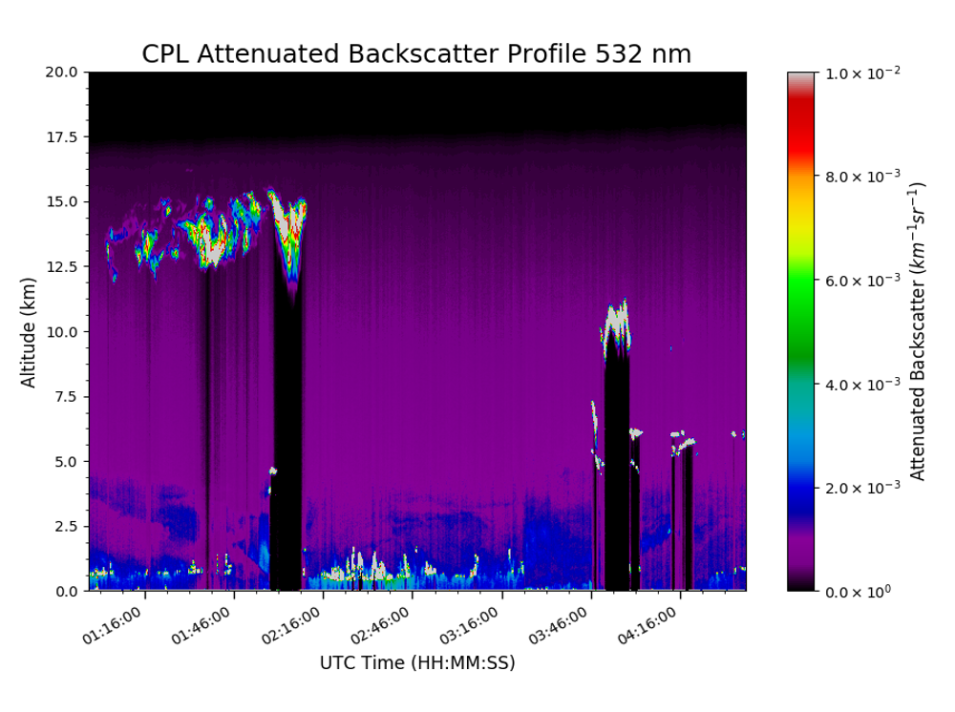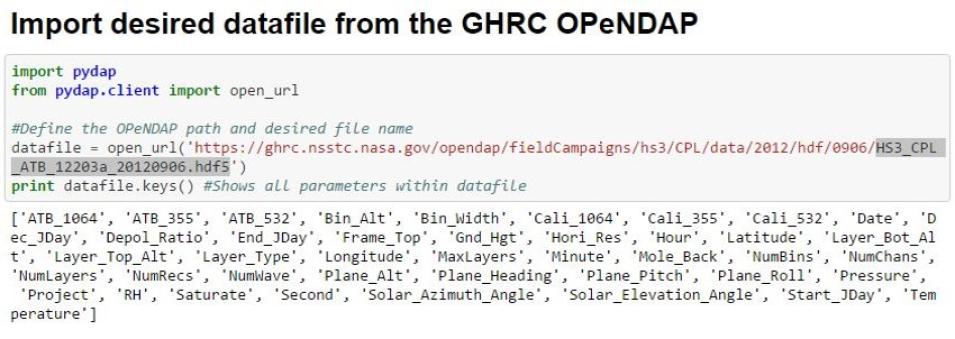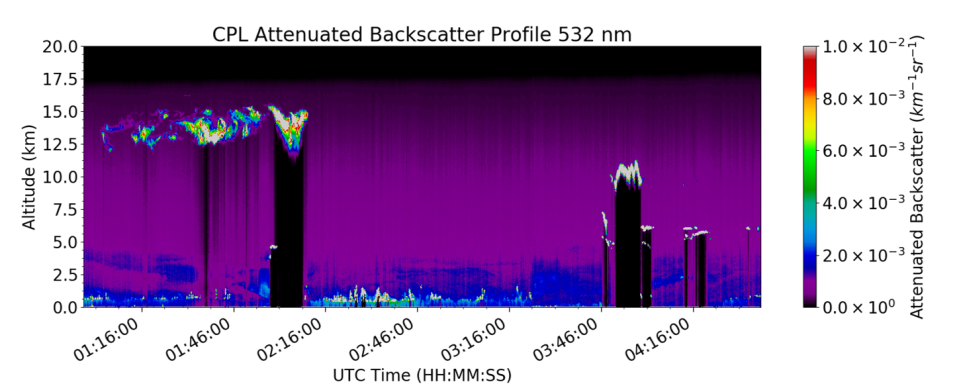Description
The Hurricane and Severe Storm Sentinel (HS3) airborne field campaign used the Cloud Precipitation Lidar (CPL) instrument to collect measurements of cloud, precipitation, and aerosol features of tropical cyclones. This data recipe instructs users on how to generate vertical time-height plots of HS3 CPL attenuated total backscatter measurements using a Python plotting routine. The Python routine requires users to define the GHRC OPeNDAP path to a datafile and the spectral channel the measurements were collected. To run this Python routine, a pre-installed version of Python and additional Python packages are required. Advanced users may alter the code to plot other data variables.







